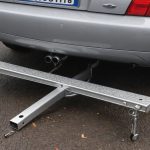Importance of Safety in Aftermarket Suspension Installations
Effective aftermarket suspension safety hinges on proper installations, as mishaps can severely jeopardise vehicle safety. An inadequately installed suspension may lead to unstable vehicle dynamics, affecting the car’s ability to handle sudden manoeuvres. This instability increases the risk of accidents, making the installation importance paramount.
Neglecting safety protocols during installation can have expensive and dramatic consequences. Vehicles could witness premature wear on components, lead to misaligned wheels, or even cause dangerous handling issues. It’s crucial to understand that every step of the suspension kit installation is intertwined with your vehicle performance responsibilities.
In the same genre : Essential methods for evaluating vehicle frame integrity after an accident: your ultimate guide to comprehensive assessment
Before undertaking such installations, comprehensive knowledge and meticulous preparation are non-negotiable. Familiarity with installation manuals and understanding specific procedural requirements can prevent errors that compromise safety. Equipping oneself with the correct tools and awareness about the whole process ensures that all safety protocols are adhered to.
In summary, while enhanced performance and aesthetics of aftermarket suspensions are tempting, safety must always take precedence. Being fully informed and adequately prepared protects not just the vehicle, but also the lives of those within and around it.
Topic to read : Crucial safety practices for safely managing and discarding hybrid vehicle batteries
Common Mistakes in Aftermarket Suspension Installations
When installing aftermarket suspension, avoiding common mistakes is critical for vehicle safety. Many common installation errors arise from inadequate preparation and rush, leading to mishaps that compromise safety. One typical safety pitfall involves incorrect torque measurements. Precision during installation is crucial, as improper torque can lead to components loosening over time, affecting vehicle handling and posing safety risks. Another frequent error is using incompatible parts. Ensuring all components are compatible with your specific vehicle model is vital to avoid operational failures.
These mistakes significantly affect vehicle handling and safety. For instance, misaligned suspension can cause uneven tyre wear, poor handling, and even loss of control during operation. Real-life cases have highlighted the severe consequences of oversight. One such case involved a vehicle with improperly seated springs, leading to a sudden drop in ride height and loss of stability during a high-speed turn.
Avoiding these pitfalls requires attention to detail, correct tools, and adherence to guidelines. Leveraging expert consultation and reliable resources can mitigate risks, ensuring safer and more successful installations. Investing time in understanding your suspension system’s requirements helps prevent costly errors and enhances overall driving experience.
Critical Safety Tips for Installing Aftermarket Suspension Kits
Installing an aftermarket suspension kit requires meticulous safety precautions to ensure vehicle integrity and longevity. First, a comprehensive set of tools and equipment is indispensable. Always have a high-quality torque wrench, jack stands, and alignment tools ready.
Focusing on installation best practices, begin by ensuring all car parts are compatible. This prevents premature failure and handling issues. Double-check that all nuts and bolts are appropriately torqued to avoid safety pitfalls like loosening during operation.
Perform continuous assessments throughout the installation. This includes checking alignment and measuring ride height to guarantee optimal vehicle performance. If inconsistencies are noted, address them promptly before proceeding.
Lastly, adopt preventive measures to enhance safety. Regularly inspect the suspension, especially after intense driving conditions or off-road adventures. Consider scheduling periodic professional evaluations, even after completing the installation.
Always remember, installing suspension components with precision not only protects your vehicle but also enhances the driving experience, making journeys both exciting and safe.
Step-by-Step Installation Guide for Aftermarket Suspension Kits
Installing an aftermarket suspension kit requires diligence and precision. Let’s delve into a step-by-step process to ensure successful installation.
Preparation and Tools Required
Start with gathering necessary tools. A high-quality torque wrench, jack stands, alignment tools, and a comprehensive workshop manual are essential. Verify that your car is on a stable surface for safety reasons. Ensuring all parts and tools match the specific suspension kit installation guide is crucial to avoid unnecessary errors.
Removing the Old Suspension
Begin by safely lifting the vehicle and securing it on jack stands. Remove the wheels for clear access. Carefully loosen and remove fasteners and bolts from the existing suspension. Be cautious with heavy components and enlist help to avoid injury.
Installing the Aftermarket Kit
Once the old suspension is removed, check the condition of all fasteners and bushings. Follow the installation procedures specific to your vehicle model, paying close attention to torque specifications. Securely fasten all bolts and double-check alignment. Safety checks after each step ensure every component is where it should be.
These procedures, combined with patience and attention to detail, enable first-time installers to achieve a professional standard and ensure their vehicle performs optimally and safely.
Troubleshooting Common Issues After Installation
Even with thorough preparation, post-installation issues with aftermarket suspension kits can occur. Spotting signs of improper installation early is crucial to maintain vehicle safety and performance. Look out for unusual noises, uneven ride height, or misaligned wheels which can indicate faulty installations.
Simple troubleshooting tips can resolve these common issues. For instance, if the vehicle exhibits excessive bouncing, check the suspension components for incorrect torque specifications or damaged parts. Adjusting these can often rectify performance issues quickly. Should you encounter steering difficulties, re-evaluate the alignment and ensure all bolts are securely fastened.
When problems persist, don’t hesitate to seek expert advice. Numerous resources are available for guidance, including workshops and community forums where enthusiasts and professionals discuss solutions. These platforms provide invaluable support, offering insights and practical advice based on shared experiences. Regularly consulting these can enhance your troubleshooting process, leading to quicker resolutions and smoother installations. Trust in the wealth of experience within the community to navigate challenges and achieve optimal results.
Using Visual Aids to Enhance Understanding
Visual aids are instrumental in mastering aftermarket suspension installation. They allow individuals to grasp complex concepts quickly and accurately, reducing the risk of installation errors. Understanding suspension installation diagrams helps clarify the layout and mechanical interactions between components, promoting more precise adjustments and alignment.
Recommended Resources
For those seeking visual guidance, numerous resources provide suspension installation diagrams and instructional videos. These visual learning tools can be pivotal, demonstrating the intricacies of installation procedures step-by-step. It’s beneficial to refer to video tutorials as they often cover specific model details and troubleshooting tips, offering visual confirmation of techniques and practices.
Leveraging Online Forums
Online forums are an excellent venue for accessing community-driven insights and shared experiences. Engage with these discussions for practical advice and firsthand accounts from other enthusiasts who have successfully navigated the installation process. Shared narratives often highlight common pitfalls, while also proposing strategies to avoid them, enhancing one’s comprehension through collective knowledge.
By incorporating these visual aids and leveraging community support, individuals can significantly improve their understanding and execution of suspension installations, ensuring safer and more effective outcomes.





